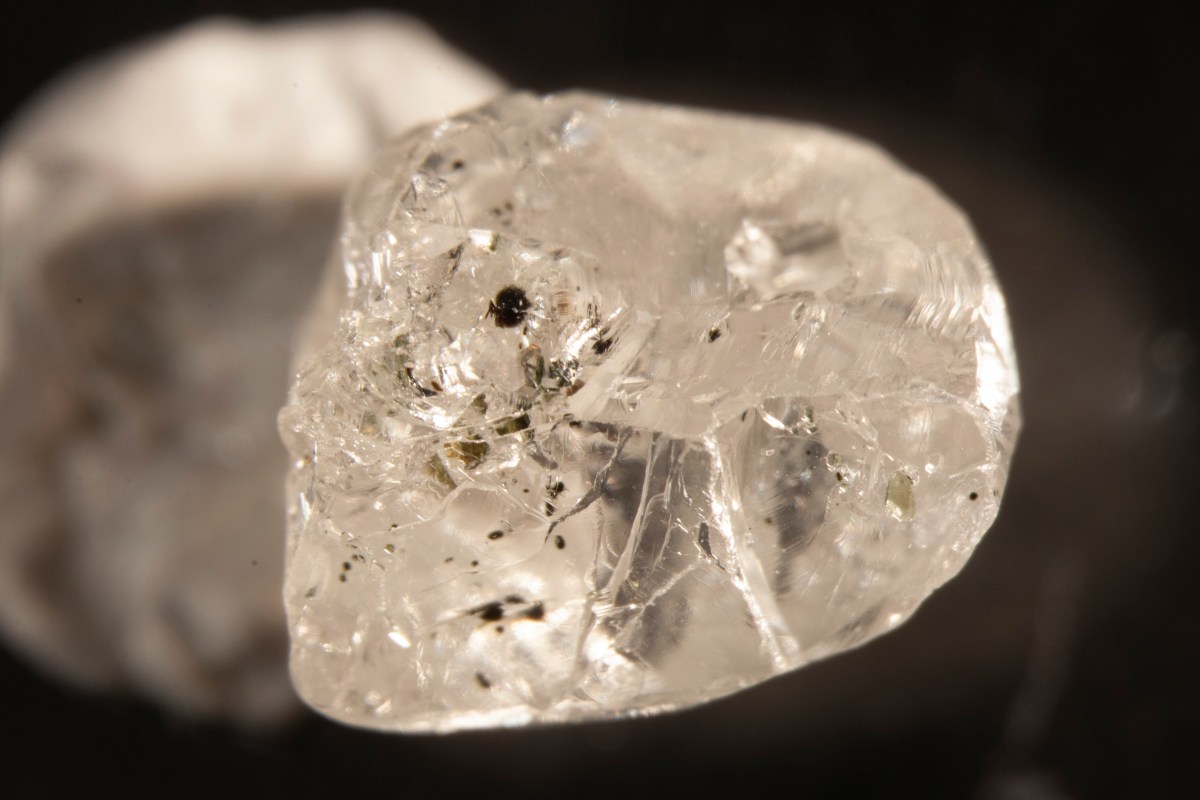
The newly discovered mineral Heamanite-(Ce), named after UAlberta professor Larry Heaman. Photo credit: William Siva-Jothy
When Larry Heaman found out that a newly discovered mineral was to be named after him, he was speechless.
“My first reaction was to think, ‘Is this really happening?’” said Heaman, a professor in the University of Alberta’s Department of Earth and Atmospheric Sciences. “To find out that this is the first known occurrence of this mineral and that my colleagues thought to name it after me came as a complete surprise. I was literally speechless.”
The new mineral, which is part of the perovskite group, will be named Heamanite-(Ce) in honour of Heaman and his lifetime of work in the field of geology and geochemistry. Found inside a diamond, Heamanite-(Ce) was discovered by graduate student William Siva-Jothy, postdoctoral fellow Chiara Anzolini, researchers Andrew Locock, Graham Pearson, and Thomas Stachel.
“Larry Heaman was the researcher who really developed perovskite dating and made it an important tool in Earth Sciences research,” said Stachel, Canada Research Chair in Diamonds. “Through his dating work, Larry Heaman has provided a critical service to the emerging diamond exploration industry in North America since the early 1990s. So to name a new perovskite group mineral after the founder of perovskite age dating is almost too good to be true.”
“This mineral was first found included in a diamond—a very special environment and a suitable honour for a very special scientist,” added Pearson, Henry Marshall Tory Chair and Canada Excellence Research Chair Laureate.
Heamanite-(Ce) has a unique chemical composition—written as (K0.5Ce0.5)TiO3— that has the potential to reveal clues about its formation environment, age, and origins in Earth’s deep mantle.
“Having a new perovskite-like mineral named after me is special because it is an acknowledgement and recognition from my closest colleagues that they view me as a prominent researcher in my field and that my perovskite research has had an important impact on the field of kimberlite origins,” added Heaman. “I would like to express my deepest gratitude to Thomas and Graham for their thoughtfulness to recognize a colleague in this way.”
The name has been approved by the Commission on New Minerals, Nomenclature and Classification of the International Mineralogical Association. This research is supported by a bursary through DERTS, funded by the Natural Sciences and Engineering Research Council of Canada (NSERC) Collaborative Research and Training Experience (CREATE) program.